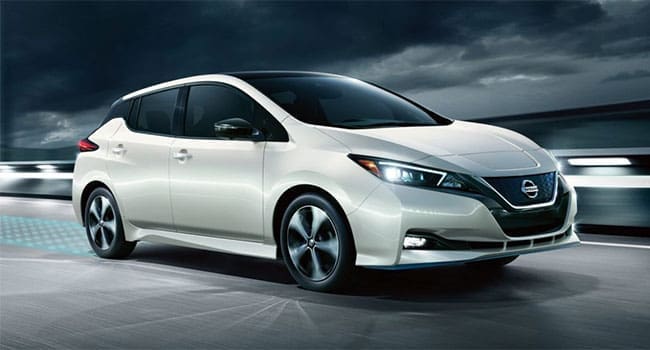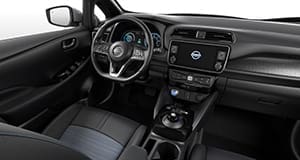
The Leaf is arguably the most popular electric car sold in Canada. And, as far as this technology goes, it’s right near the front of the pack
 In California, they recently introduced an amendment that will make it illegal to sell or purchase new fossil-fuel-powered automobiles after 2035. You will apparently still be able to buy a used gas-powered car, but in California the writing is on the wall when it comes to conventional internal combustion engine vehicles.
In California, they recently introduced an amendment that will make it illegal to sell or purchase new fossil-fuel-powered automobiles after 2035. You will apparently still be able to buy a used gas-powered car, but in California the writing is on the wall when it comes to conventional internal combustion engine vehicles.
Battery-powered cars are certainly exploding in popularity in both the United States and Canada. Virtually every manufacturer has an e-car of one type or another in its lineup.
One of the first to get on board the battery bandwagon was Nissan, with the Leaf.
Introduced in 2010 and now in its second generation, the Leaf is arguably the most popular electric car sold in Canada. And, as far as this technology goes, it’s right near the front of the pack. I recently had one for a week.
The 2020 Leaf comes with a 110-kW electric motor that pumps out 147 horsepower to the front wheels. A 40-kWh lithium-ion battery pack provides the power.
It’s completely silent in operation except for a slight hum when underway and a strangled beeping noise from somewhere in the bowels of the vehicle when you’re backing up. Love the first bit but it feels like you’re driving some kind of delivery van when you park.
Unlike many e-cars I’ve driven, the Leaf features surprisingly good handling with a nice sense of balance. You can drive this one just like you would any other mainstream hatchback and don’t need to spare the horses at all. It’s more than powerful enough for city driving and has plenty of reserve power on the highway.
Sometimes the heating, ventilation and air conditioning controls can be a little fussy. You need to fiddle with them a bit to get the right combo of air flow and temperature. As well, the air conditioning isn’t what you’d call powerful. This isn’t a deal-breaker, though.
There’s all kinds of room in the back seat and four adults can ride in comfort. The rear hatchback reveals a storage area for the charging cable and other odds and ends, and cargo capacity is a little compromised.
Love the dash readout that gives you the battery percentage level and shows how well the regenerative braking is doing its job. It’s not glitzy or kindergarten-ish like some e-cars, but informative and easy to read.

Love the dash readout that gives you battery percentage level and shows how well the regenerative braking is doing. It’s not glitzy or kindergarten-ish like some e-cars
If you don’t have a quick-charge station, you’ll need to plan your recharging sessions. For example, I left my test car plugged into our 110-volt house current for eight hours, which netted me 20 km of range.
This leads me to the Leaf’s Achilles heel: range anxiety. Yes, the car has a purported range of some 350 km (215 miles), but long trips will require meticulous planning.
Essentially, if you’re contemplating a road trip, you’ll need to drive from charging station to charging station. And if there’s any kind of glitch – out-of-service charging units or a power outage, for example – you’ll definitely need a plan B. Sure, you can plug in at a hotel or motel, but be prepared to wait. And if you run out of juice on the road, you’re done for.
During my entire time with this car, I was fixated on its range: do I dare go for a drive in the country? What happens if I can’t find a charging station? Do I have time for a quick plug-in before I go out?
I really liked this car and would consider owning one. But until Nissan – and all the other manufacturers – get this range issue sorted out, electric cars are more or less restricted to the city.
That’s not a problem if you’re looking for a commuter car, and the Leaf is as good as these things get. But for a general use, go-anywhere-at-any-time vehicle, uh-uh, not yet.
Ted Laturnus writes for Troy Media’s Driver Seat Associate website. An automotive journalist since 1976, he has been named Canadian Automotive Journalist of the Year twice and is past-president of the Automotive Journalists Association of Canada (AJAC).
© Driver Seat
The views, opinions and positions expressed by columnists and contributors are the author’s alone. They do not inherently or expressly reflect the views, opinions and/or positions of our publication.

